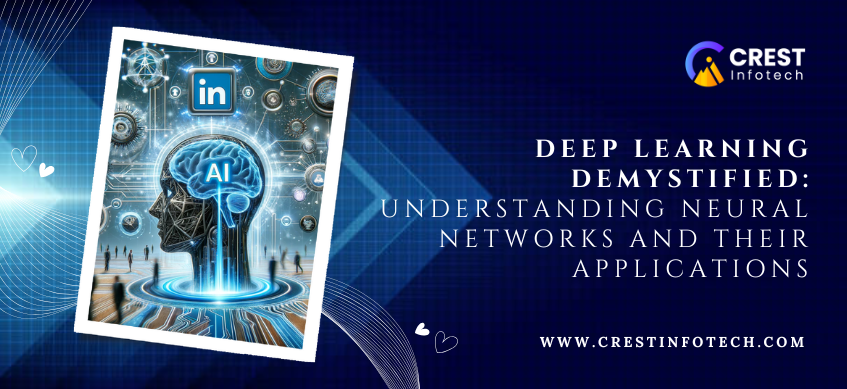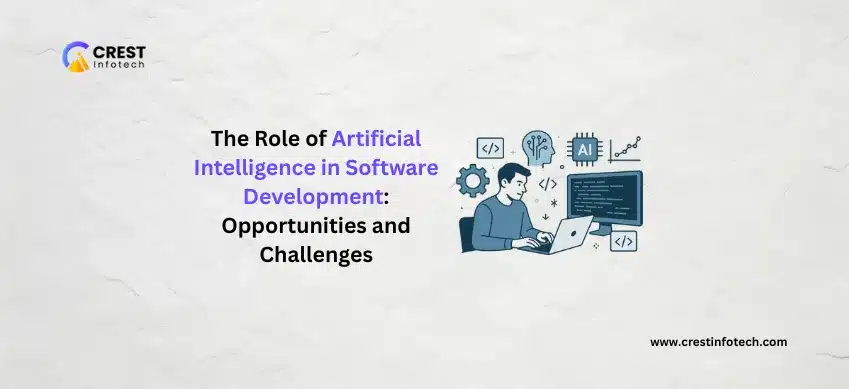Deep learning, a subset of machine learning, has revolutionized fields such as image recognition, natural language processing, and autonomous driving. At its core, deep learning is about training models to learn complex patterns in data through artificial neural networks. These models are inspired by the structure and functioning of the human brain, allowing machines to make decisions and predictions with impressive accuracy. In this article, we will demystify deep learning, explore the fundamentals of neural networks, and highlight some of their most impactful applications.
What is Deep Learning?
Deep learning is a type of machine learning that uses neural networks with many layers (hence the term “deep”) to model complex patterns in large datasets. Unlike traditional machine learning algorithms, which often require manual feature engineering, deep learning models automatically learn representations of data through multiple layers of processing. This ability to learn from data without explicit programming makes deep learning especially powerful for tasks involving unstructured data like images, audio, and text.
How Neural Networks Work: The Basics
A neural network is a computational model inspired by the human brain’s network of neurons. It consists of layers of interconnected nodes, also called neurons, where each connection between nodes has a weight that adjusts during training.
Key Components of Neural Networks:
- Neurons (Nodes): Each neuron processes input data, applies a mathematical function, and passes the result to the next layer of neurons.
- Layers: A typical neural network has three types of layers:
- Input Layer: Takes in the raw data.
- Hidden Layers: Intermediate layers where the network learns to transform the input data into meaningful representations. A deep network has multiple hidden layers, allowing it to learn more abstract features.
- Output Layer: Produces the final prediction or classification result.
- Weights and Biases: Each connection between neurons has a weight that determines the strength of the signal passed between them. The model also has biases that adjust the output of neurons to better fit the data.
- Activation Function: After a neuron processes the input, an activation function determines whether the signal should pass through to the next layer. Common activation functions include ReLU (Rectified Linear Unit), sigmoid, and tanh.
- Loss Function: The loss function measures the difference between the model’s prediction and the actual result, guiding the training process to minimize this error.
- Optimizer: The optimizer adjusts the weights and biases in the network using techniques like gradient descent to minimize the loss function.
Training a Neural Network
Training a neural network involves feeding data through the network, calculating the error (or loss), and using optimization algorithms (such as gradient descent) to adjust the weights to reduce that error. This process is repeated iteratively across many epochs (passes through the dataset) until the model converges to a solution.
Types of Neural Networks
Neural networks come in various architectures, each suited for different types of tasks. Here are a few common types:
- Feedforward Neural Networks (FNN):
- The simplest type of neural network, where information flows in one direction from input to output. FNNs are commonly used for tasks like regression and classification.
- Convolutional Neural Networks (CNN):
- CNNs are specifically designed for image-related tasks. They use convolutional layers that apply filters to the input data, allowing the model to learn spatial hierarchies and detect patterns like edges, textures, and objects. CNNs are widely used in image recognition, object detection, and video analysis.
- Recurrent Neural Networks (RNN):
- RNNs are designed for sequential data, where the output depends not just on the current input but also on previous inputs (e.g., time series or language). RNNs are used in applications like speech recognition, language modeling, and machine translation.
- Long Short-Term Memory Networks (LSTM):
- LSTMs are a special kind of RNN that helps the model remember long-term dependencies in sequences, addressing the problem of vanishing gradients in traditional RNNs. They are often used for tasks that require understanding context over time, such as language translation or sentiment analysis.
- Generative Adversarial Networks (GANs):
- GANs consist of two networks: a generator that creates new data and a discriminator that evaluates it. They are often used to generate realistic images, videos, and even music by training the generator to fool the discriminator. GANs have gained popularity in creative applications like art and deepfakes.
Applications of Deep Learning
Deep learning has made significant strides in a variety of domains. Below are some of the most impactful applications:
1. Image Recognition and Computer Vision
Deep learning has revolutionized computer vision, enabling machines to recognize objects, people, and scenes with human-like accuracy. Convolutional Neural Networks (CNNs) are the foundation of most modern image recognition systems.
- Example: Facial recognition systems, medical image analysis (e.g., detecting tumors in X-rays), and self-driving cars’ vision systems use deep learning for visual understanding.
2. Natural Language Processing (NLP)
NLP tasks, such as speech recognition, sentiment analysis, machine translation, and text summarization, have been greatly improved by deep learning models like Recurrent Neural Networks (RNNs) and transformers.
- Example: Models like OpenAI’s GPT (Generative Pre-trained Transformer) and Google’s BERT (Bidirectional Encoder Representations from Transformers) have significantly advanced language understanding and generation, enabling applications like chatbots, virtual assistants, and automatic translation.
3. Autonomous Vehicles
Deep learning is crucial for enabling autonomous vehicles to navigate and understand their environment. CNNs and RNNs help self-driving cars process sensory data (like images from cameras and LIDAR) to make real-time decisions about speed, direction, and obstacle avoidance.
- Example: Tesla and Waymo use deep learning to interpret camera images, lidar data, and radar information to drive cars autonomously.
4. Healthcare and Medical Diagnosis
Deep learning models are helping to transform healthcare by improving the accuracy and speed of medical diagnoses. Neural networks can analyze medical images, predict disease outcomes, and even suggest personalized treatments.
- Example: Deep learning algorithms have been used to detect conditions like diabetic retinopathy, skin cancer, and heart disease from medical images.
5. Voice Assistants and Speech Recognition
Speech recognition has made significant advancements with deep learning. RNNs, especially LSTMs, allow systems to convert spoken language into text, understand user commands, and respond appropriately.
- Example: Voice assistants like Amazon Alexa, Google Assistant, and Apple’s Siri use deep learning for natural language understanding and speech recognition.
6. Generative Models and Art
Generative Adversarial Networks (GANs) have been used to create realistic images, music, and other forms of content. These models can generate new, never-before-seen data based on existing patterns in the training data.
- Example: GANs have been used to create hyper-realistic images of people who don’t exist and generate art, music, and even video game environments.
7. Gaming and AI Agents
Deep learning has also been applied in gaming and AI agents. Reinforcement learning, a type of deep learning, allows agents to learn how to play games by rewarding good actions and penalizing bad ones.
- Example: AlphaGo, developed by DeepMind, used deep reinforcement learning to defeat human champions in the ancient Chinese game of Go.
Challenges and the Future of Deep Learning
While deep learning has shown impressive results, it is not without challenges:
- Data Requirements: Deep learning models require large amounts of labeled data for training, which can be expensive and time-consuming to collect.
- Computational Power: Training deep learning models requires substantial computational resources, including powerful GPUs and specialized hardware.
- Interpretability: Neural networks are often considered “black-box” models, meaning it can be difficult to understand how they make decisions, which can be a concern in critical applications like healthcare.
Despite these challenges, the future of deep learning looks promising. Ongoing advancements in hardware, techniques like transfer learning, and improvements in algorithms are making deep learning more accessible and efficient.
Conclusion
Deep learning has transformed the way machines learn from data, enabling them to tackle complex tasks that were once thought to be impossible. Neural networks, particularly deep networks, have become the cornerstone of cutting-edge applications in areas like computer vision, natural language processing, and autonomous systems. While challenges remain, the continued progress in deep learning research promises even more powerful models and innovative solutions across various industries. Understanding the fundamentals of deep learning, from neural networks to applications, is essential for anyone interested in the future of AI.



